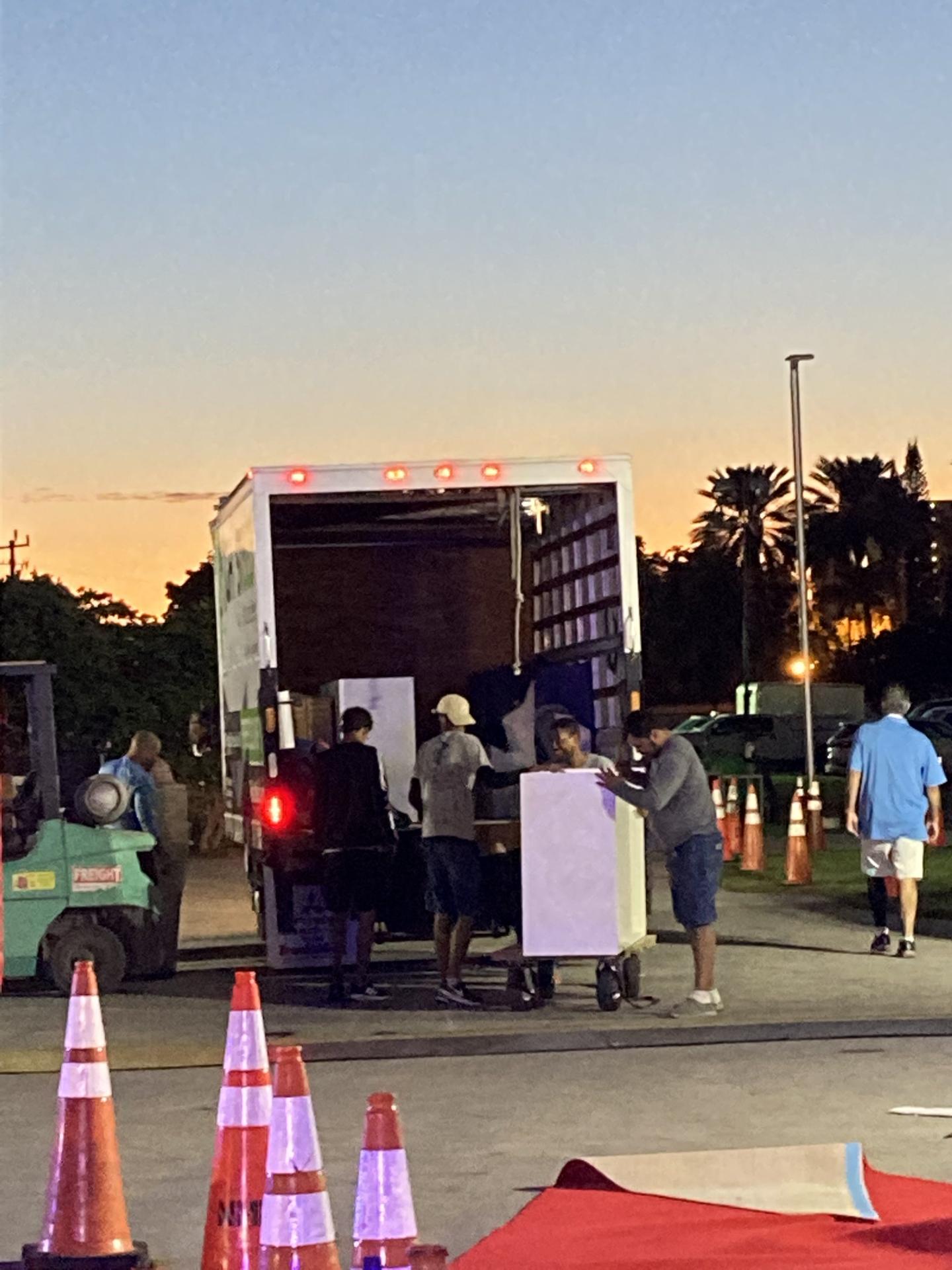Trade shows can be a big opportunity for businesses. But before you can showcase your products or services, there’s a crucial step: getting your stuff to the venue safely and on time. Shipping to a trade show is more than just putting items in a box and sending them off. It’s about planning, choosing the right way to send, and making sure everything arrives as it should.
Whether it’s your first trade show or you’ve been to many, understanding the basics of shipping can make a huge difference. In this article, we’ll guide you through the essentials of shipping to a trade show, from packing your items to tracking them all the way to the venue. By the end, you’ll have a clear idea of how to make your trade show shipping smooth and stress-free.
How to Ship to a Trade Show by Understanding the Trade Show’s Requirements
Attending a trade show can be a thrilling experience for businesses. But before you showcase your products or introduce your services, you have to make sure everything you need gets to the venue without a hitch. The first step? Fully understanding what the trade show expects from you. Here’s a deeper look into how to get this part right.
Researching Venue Regulations and Requirements
Every venue is unique, and so are its rules. Just as you wouldn’t wear winter clothes to a beach, you wouldn’t want to send a huge display to a venue that only allows small booths. Some venues might be strict about the weight of the items you bring, or they could have special guidelines on how booths should be set up. They might even have rules on things like how loud your display can be or what type of lighting you can use. It’s crucial to get a detailed list of what’s allowed and what’s not. This way, you’re prepared and there are no last-minute surprises. Doing your homework ahead of time can save you a lot of stress and potential extra costs.
Read my article about how to build a trade show booth.
Importance of Knowing the Show’s Move-In and Move-Out Dates
Imagine this: you’ve packed everything, sent it off, but then realize you sent it too early, or even worse, too late. Knowing the exact dates you can start setting up (move-in) and when you need to have everything packed up (move-out) is vital. It’s not just about avoiding rush fees or potential storage charges, but also ensuring that you have enough time to make your booth look its best. When you’re aware of these dates, you can plan your shipment to arrive just on time, giving you peace of mind. Plus, it’s also a good idea to have a little buffer, just in case there are any unexpected delays. Remember, being on time is more than just punctuality; it’s about making the most of the opportunity the trade show offers.
Read my article how to choose a trade show.
How to Ship to a Trade Show? Choosing the Right Shipping Method
When getting ready for a trade show, one of the biggest decisions you’ll make is how to ship your materials. It’s essential to select a method that’s both efficient and fits your budget. Here’s a look into the various options available and their benefits and drawbacks.
Different Shipping Options
Common Carriers: These are your standard shipping companies that handle a wide variety of items, from household goods to business equipment.
Specialized Trade Show Carriers: These carriers focus solely on trade shows. They know the ins and outs of venues, and they’re used to handling booth materials.
Couriers: Ideal for smaller, time-sensitive items. They offer quick, direct delivery but might not be the best for larger shipments.
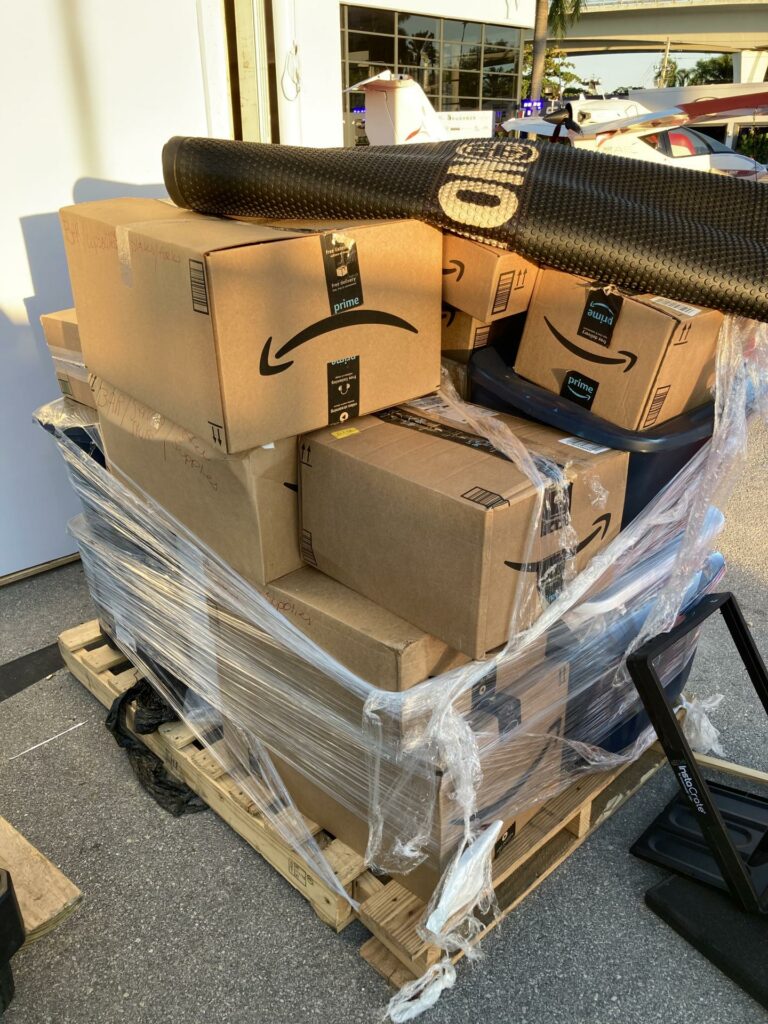
Pros and Cons of Each Method
Common Carriers
- Pros: Often more affordable, easy to book, wide service area.
- Cons: Less specialized in trade show requirements, potential for delays during peak times.
Specialized Trade Show Carriers
- Pros: Expertise in trade show logistics, tailored services, better handling of booth materials.
- Cons: Might be more expensive, limited to trade show items.
Couriers
- Pros: Fast delivery, great for last-minute shipments, direct door-to-door service.
- Cons: Not suited for bulky or heavy items, can be pricey for longer distances.
For those who want to simplify their trade show experience even further, considering a 10×10 turnkey trade show kit could be a game-changer. With services like Everything Tradeshows, you get the added advantage of hassle-free transport. Instead of diving deep into the maze of shipping logistics, you can let the experts handle it.
Everything Tradeshows, for example, offers comprehensive service where they manage shipping using their own fleet of trucks. This means not only are your materials transported safely, but you also save the time and effort of coordinating with a separate shipping company. It’s a streamlined solution for businesses that want to focus more on the show and less on the behind-the-scenes logistics.
Essential Tips for Packaging Your Materials When Shipping to a Trade Show
When preparing for a trade show, how you package your materials can make a significant difference. Ensuring that everything is securely packed can prevent damage, saving both money and stress.
Importance of Secure and Clear Packaging
Ensuring that each item is snug and safe within its container is crucial. Secure packaging is not just about preventing breaks or dents but also about maintaining the professional image of your brand. Moreover, clear packaging allows for quick identification of contents, which can speed up the setup process once you’re at the venue.
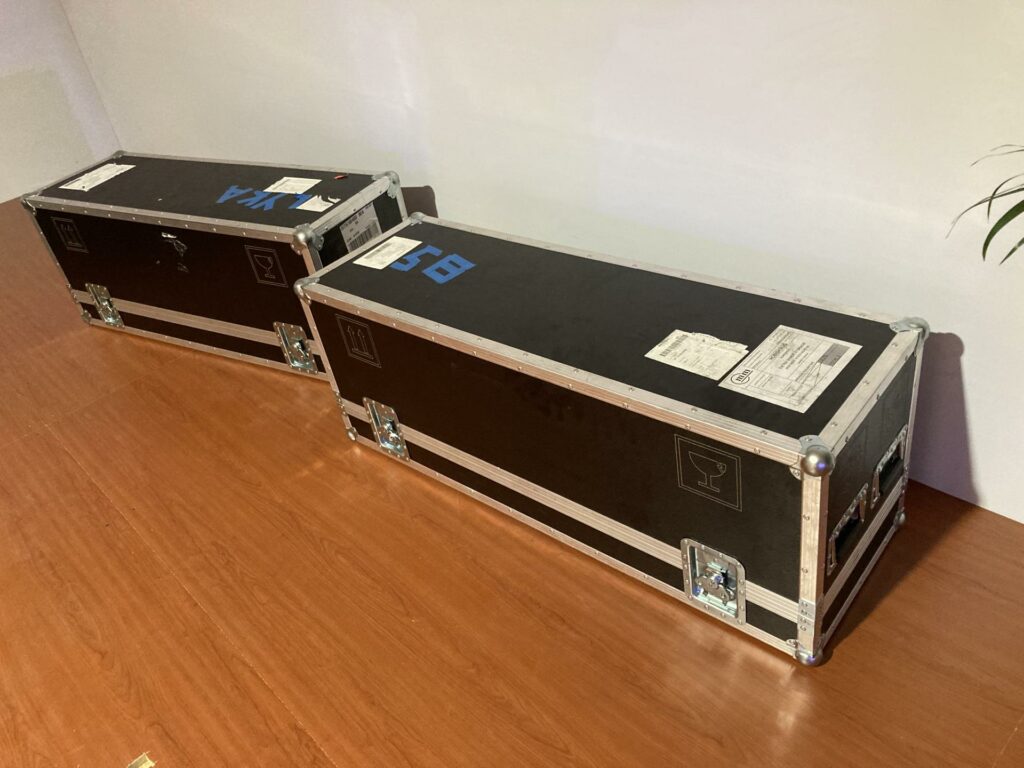
Tips for Protecting Fragile Items
For delicate items, consider using bubble wrap, foam inserts, or padded dividers. Double-boxing, where you place a box within another box with cushioning materials in between, can provide an additional layer of protection. Always remember to mark these boxes as “fragile” so that handlers know to treat them with extra care.
Read my article about how to prepare for a trade show.
Labeling Tips
Labels serve as a guidepost for your shipments. It’s essential that every package has your company name prominently displayed. Additionally, including your booth number can ensure your materials end up in the right spot at the venue. Lastly, always have a contact detail, like a phone number, on the label. This way, if there are any questions or issues, you can be reached quickly to resolve them.
How to Ship to a Trade Show: Organizing and Inventorying Your Shipment
As the adage goes, “Organization is the key to success.” This is especially true when shipping items to a trade show. Properly organizing and keeping an inventory ensures that nothing is left behind, and everything reaches its destination intact.
Creating a Checklist of All Items to be Shipped
Before you even start the packaging process, it’s wise to create a comprehensive checklist of all items that need to be sent. This list serves as a reference point, allowing you to check off each item as it’s packed and ensuring that nothing is overlooked. Additionally, when you arrive at the trade show, this list can help in quickly verifying that all items have been received.
Importance of Photographing Items as a Record and for Insurance Purposes
Taking clear photographs of every item you’re shipping serves a dual purpose. Firstly, it provides a visual record, making it easier to identify and locate items during unpacking. Secondly, in the unfortunate event that something is damaged during transit, these photos can be invaluable for insurance claims. They offer proof of the item’s condition before shipping, making it easier to justify and process any potential compensation.
How to Ship to a Trade Show? Insurance and Liabilities
Navigating the world of trade shows is exciting, but it’s not without its potential pitfalls. One of the primary concerns when shipping materials to the venue is the safety and security of your items. This is where understanding insurance and liabilities becomes crucial.
Explaining the Need for Shipping Insurance
Shipping insurance provides a safety net for businesses. Despite our best efforts, accidents can happen – items can get damaged, lost, or even stolen during transit. With shipping insurance, you’re financially protected against these unforeseen events. It ensures that in the case of any mishaps, you’re compensated for the value of the lost or damaged items, allowing you to replace or repair them without bearing the full cost.
Understanding Carrier Liabilities and What’s Covered
While it might seem comforting to know that carriers have certain liabilities when transporting your goods, it’s vital to understand the extent of their responsibility. Carrier liabilities often have limits on the amount they will pay per pound of damaged or lost goods, and this might not cover the full value of your items. Additionally, there are circumstances, like acts of God or inherent vice, where carriers might not be held responsible at all. It’s crucial to be aware of these nuances, and if the carrier’s liability doesn’t offer sufficient coverage, supplementary insurance might be a wise choice.
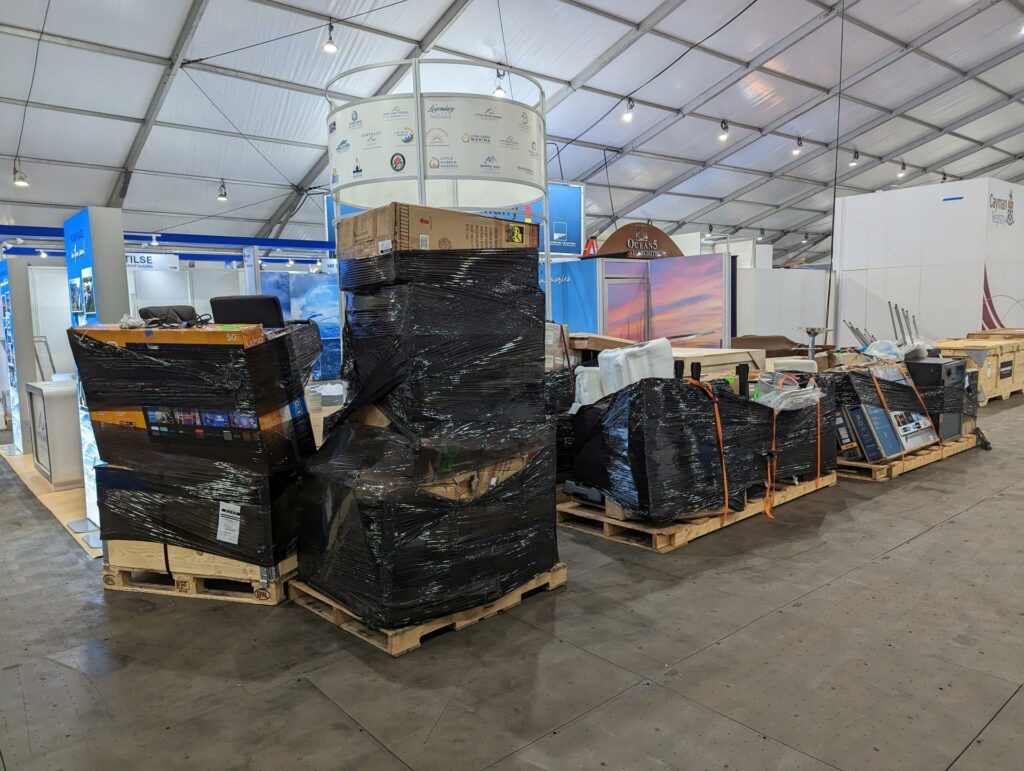
How to Ship to a Trade Show Without Breaking the Bank
Shipping to a trade show is an investment, and like all investments, it’s wise to manage and optimize costs. With a bit of foresight and understanding, you can make sure you’re getting the best value without compromising on the safety and timeliness of your shipment.
Tips to Reduce Shipping Costs
One of the straightforward ways to manage costs is to consider early shipping. Sending out your materials well in advance can often lead to lower rates compared to last-minute rush shipments. Taking the time to compare rates between different carriers can also unveil more budget-friendly options. Moreover, if you’re shipping multiple items, consolidating shipments can be a great strategy. Instead of sending out multiple smaller packages, combining them into a larger shipment can lead to significant savings.
Understanding Hidden Fees and Surcharges
The quoted rate for shipping is often just the starting point. Many carriers have additional fees and surcharges that can quickly inflate your final bill. These might include fuel surcharges, fees for oversized items, or even charges for delivery to convention centers. Being aware of these potential add-ons is essential. Always ask carriers for a detailed breakdown of costs and keep an eye out for any unexpected fees. By understanding and anticipating these charges, you’re in a better position to budget accurately and avoid unwelcome surprises.
How to Ship to a Trade Show? On-Site Logistics
Once your shipment reaches the trade show venue, the task isn’t over. Now comes the challenge of on-site logistics. Ensuring a seamless transition from arrival to setup is crucial for a successful trade show experience.
Coordinating with On-Site Handlers or Drayage Companies
Upon arrival at the venue, it’s often the on-site handlers or drayage companies that take over the task of transporting your items from the loading dock to your booth space. Having a clear line of communication with them is essential. Provide them with detailed instructions, ensure they have your contact information, and stay informed about any potential fees associated with their services.
Tips for Smooth Move-In and Setup
To ensure a hassle-free move-in, first, familiarize yourself with the venue’s layout. Know the location of your booth, access points, and where services like electricity or internet are available. Having a team with clearly defined roles can expedite the setup process. For example, designate individuals specifically for unpacking, booth assembly, and arranging display items. Lastly, always have a contingency plan. Things might not always go as expected, so being prepared for the unexpected will keep stress levels down.
Read my article about trade show booth tips.
Storing Shipping Containers and Crates During the Event
Once everything is set up, you’re left with empty containers and crates. These need to be stored properly until the end of the event. Some venues offer dedicated storage areas, while others might require you to make arrangements with external storage providers. Ensure that containers are labeled clearly, so they’re easy to locate when it’s time to pack up. Also, consider investing in collapsible or stackable containers to optimize storage space and reduce costs.
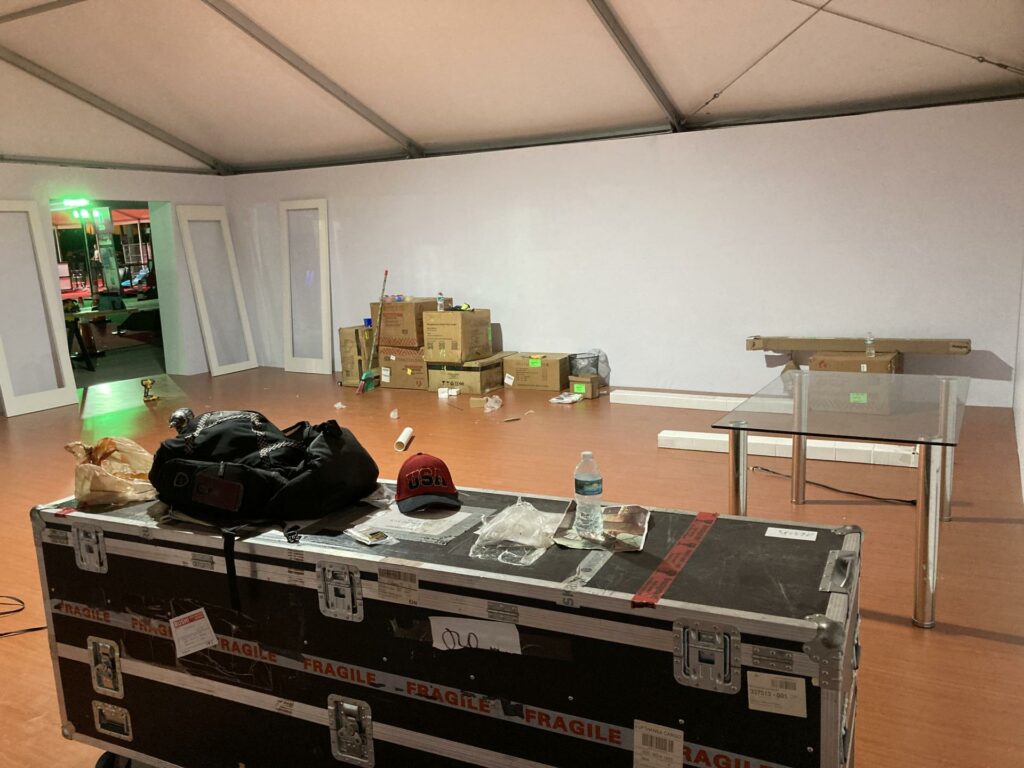
How to Efficiently Ship Back from a Trade Show
The trade show might have come to an end, but there’s still the task of getting everything back. Just as there’s an art to shipping to the venue, returning items post-event requires careful planning and execution.
Tips for Efficient and Hassle-Free Repacking
Repacking items after a trade show can be more challenging than the initial packing, especially with the fatigue after the event. Here are some pointers:
- Start Early: Begin the repacking process well before the venue’s move-out deadline to avoid a last-minute rush.
- Checklist Revisited: Use your initial checklist to ensure all items are accounted for and packed. This can also help you identify if any item is missing or damaged.
- Use Original Packaging: If possible, use the original packaging materials, especially for fragile items, as they were designed to protect the product.
- Stay Organized: Keep related items together. For instance, pack all cords and cables in a single box and label them clearly.
Deciding on Immediate Shipping or Utilizing a Storage Solution
Depending on your future plans, you might not want to ship everything back immediately. If you have another trade show or event in the same area soon, consider using a storage solution. Many venues or local service providers offer storage facilities specifically tailored for trade show materials. This can save both time and money, as you avoid shipping items back and forth. However, if you decide on immediate shipping, ensure you have pre-arranged this with your chosen carrier to avoid any delays or added costs.
How to Track Your Shipment to a Trade Show
In the vast network of shipping, where countless packages are transported daily, ensuring your trade show materials reach their destination safely is paramount. The solution lies in efficient tracking.
Importance of Using Tracking Systems
Using a tracking system allows you to monitor your shipment’s journey every step of the way. It provides peace of mind, ensuring your packages aren’t lost in transit. Furthermore, a tracking system offers precise details such as the shipment’s current location, expected delivery date, and any unforeseen delays. This data enables you to make any necessary arrangements or adjustments on your end, ensuring that the setup process at the trade show remains as seamless as possible.
Keeping in Touch with Your Carrier for Real-Time Updates
While tracking systems provide a wealth of information, maintaining open communication with your carrier can provide additional insights. They can offer real-time updates, especially if there are issues that might not be immediately reflected in online tracking systems. Regular check-ins with your carrier can alert you to potential challenges, like weather-related delays or rerouting, allowing you to prepare or make alternative plans if needed. It’s always beneficial to be in the loop, ensuring that both you and your carrier are aligned in ensuring the successful delivery of your trade show materials.
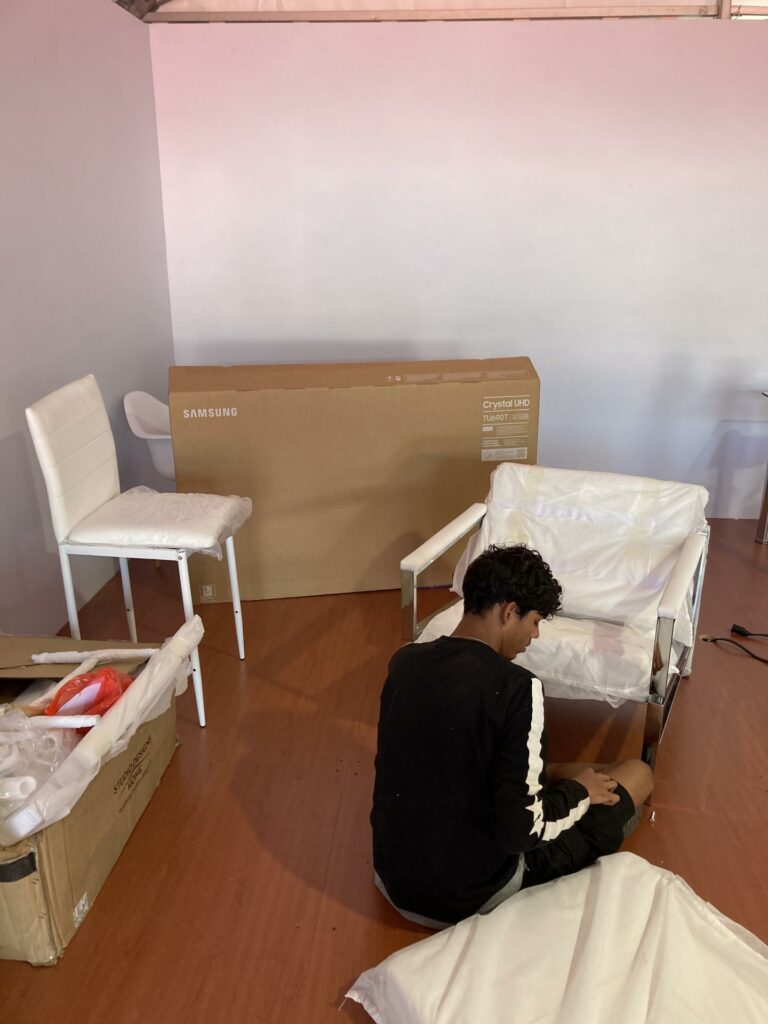
How to Ship to a Trade Show Without the Headaches – Troubleshooting Common Issues
Shipping, despite all its intricacies and planning, doesn’t always go as smoothly as we’d like. It’s essential to be prepared for common issues and know how to address them efficiently.
Addressing Lost or Delayed Shipments
Lost or significantly delayed shipments can be a major concern, especially with the tight timelines of trade shows. Here’s how to approach such situations:
- Stay Calm and Contact the Carrier: The first step is to get in touch with your shipping carrier. They might have information about the delay or can help locate the shipment.
- Use Your Tracking Number: Your tracking number is crucial. Provide it to the carrier to get detailed information about the shipment’s last known location.
- Plan for Contingencies: If it looks like your shipment won’t arrive in time, consider alternative solutions like renting equipment or materials locally or having backup materials sent via express shipping.
What to Do in Case of Damaged Goods
Discovering that your materials have been damaged in transit can be disheartening. Here’s a guide on how to address this issue:
- Document the Damage: Before anything else, take clear photographs of the damaged goods and the condition of the packaging. This is vital for any insurance claims.
- Contact the Carrier: Notify your carrier about the damage immediately. They might have specific protocols or paperwork for such situations.
- Review Your Insurance: Check your shipping insurance policy to understand the coverage for damaged goods and initiate a claim if necessary.
- Seek Local Solutions: If the damaged items are crucial for your trade show display, consider seeking local vendors who might be able to provide replacements or repair services in a short timeframe.
How to Ship to a Trade Show? Conclusion
Shipping for a trade show is a big task, but with the right steps, it can be made simpler. We’ve talked about many important things like understanding the show’s needs, picking the best way to send items, packing them well, and making sure everything is safe with insurance. It’s also key to watch where your items are, fix any problems that come up, and manage your costs. As we wrap up, remember to start planning your shipping early. This gives you more time to get things ready and deal with any surprises. Staying organized will help everything go smoothly. When you take care of your shipping in the right way, you’re setting yourself up for a great trade show.
In addition, there’s a handy option for those who want to skip the complexities of shipping altogether: the trade show booth rental kit. When you go with this option, a lot of stress can be lifted off your shoulders. Why? Because when you choose a turnkey rental kit, there’s no need to fret over the details of transport. Companies like Everything Tradeshows handle the entire shipping process for you. So, not only do you save time and energy, but you also have professionals ensuring your booth materials arrive safely and on time. It’s a perfect choice for those wanting a hassle-free trade show experience.
How to Ship to a Trade Show? FAQs
What is the first step in preparing to ship items to a trade show?
The first step is understanding the trade show’s specific requirements, including venue regulations, move-in and move-out dates, and any special shipping instructions they might have.
Are there specialized carriers for trade show shipments?
Yes, there are specialized trade show carriers who have experience handling and delivering materials specifically for trade shows. They understand the unique requirements and timelines of such events.
How should I pack fragile items for a trade show shipment?
Fragile items should be packed securely using bubble wrap, foam, or other cushioning materials. It’s also a good idea to use sturdy boxes and label them as “Fragile” so handlers know to take extra care.
Why is it important to label each package with company details and booth number?
Labeling helps ensure your items are delivered to the correct booth space without confusion. In large events with multiple exhibitors, clear labeling can prevent mix-ups and misplaced items.
How can I manage and reduce shipping costs for a trade show?
You can manage costs by shipping early to avoid rush fees, comparing rates between different carriers, and consolidating multiple items into a single shipment.
Should I get insurance for my trade show shipment?
Yes, it’s recommended to get shipping insurance. This protects you financially in case items are lost, damaged, or delayed during transit.
How do I handle on-site logistics once my shipment arrives at the venue?
Coordinate with on-site handlers or drayage companies who will transport your items to your booth. Familiarize yourself with the venue’s layout and have a clear plan for move-in and setup.
What should I do if my shipment is lost or delayed?
Immediately contact your carrier and provide them with the tracking number. If the items won’t arrive on time, consider local rental options or express shipping for essential materials.
Is tracking my shipment necessary?
Absolutely. Tracking allows you to monitor your shipment in real-time, ensuring it’s on the right path and providing peace of mind.
What advantages does a turnkey rental kit offer in terms of shipping?
A turnkey rental kit, like the ones offered by companies like Everything Tradeshows, covers the entire shipping process. This means you won’t have to worry about transport logistics, as the provider handles everything, ensuring a hassle-free experience.
Learn more about trade show best practices:
- Discover essential trade show tips for exhibitors to maximize your booth’s potential.
- Discover ways to gather potential customer contacts during a trade exhibition.
- Explore effective strategies on how to display clothing at a trade show to boost visitor engagement.
- Not sure how to display products at a trade show? Read our guide.
- Engaging in activities that capture interest is crucial for mastering the art of drawing people to your booth.
- Explore strategies on how to get exhibitors for a trade show.
- Learn more about creating an effective trade show booth.
- Discover how to make your trade show booth stand out with these innovative design tips!
- To enhance your marketing skills, learn how to plan a trade show for maximum impact and audience engagement.
- Effective research is vital in understanding how to prepare for a trade show.
- Discover effective selling techniques for trade shows to enhance your company’s reach and impact.
- Read our detailed guide how to set up a booth at a trade show.
- Many businesses boost their revenue by selling at trade shows. Read our blog post.
- Here are some trade show attendee tips to help you make the most of your experience.
- Explore our guide about trade show best practices.
- Remember to go over the trade show checklist prior to the event to confirm that all is prepared and accounted for.
- Consider these tips for trade show exhibitors to enhance your success at the upcoming event.
- Looking for trade show giveaway ideas? Check out our selection of promotional products!
- Consider these promotional item suggestions to draw attendees to your exhibition space.
- What makes a good trade show booth? Find out in our latest blog post.
- Looking for trade show banner ideas? Check out our latest design inspirations!
- What to wear to a trade show? Read our guide.
- Are you interested in what type of promotion takes place at trade shows? Explore this topic.
- Why attend trade shows? Discover the best arguments.
- Why do exhibitors attend trade shows? Read more on our blog.
- Discover the answer to this common question: Why exhibit at a trade show?
- Learn more about why are trade shows important.

It’s in the name! Everything Tradeshows is your one-stop shop for all things trade shows, including booth purchases, booth rentals, and complete brand management services. Ready to get started? Have questions? Get in touch by calling us at (954) 791-8882 or by filling out the form below. We can’t wait to hear from you!

